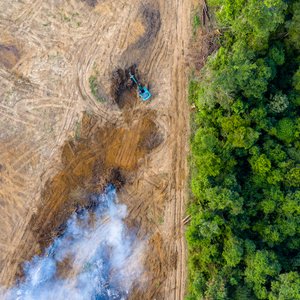R. Ramakrishna, Senior Scientist, Fisheries Research Station, S.V. Veterinary University, Undi, Andhra Pradesh, India
Thomas A. Shipton, FAO Consultant, Grahamstown, South Africa
and
Mohammad R. Hasan, Aquaculture Officer, Aquaculture Branch Fisheries and Aquaculture Department, FAO, Rome, Italy
Abstract
This study reviews the aquaculture of Indian major carps, rohu (Labeo rohita), catla (Catla catla) and mrigal (Cirrhinus cirrhosus) with special reference to current feeding and feed management practices in Andhra Pradesh, India. The study is based on a survey of 106 farmers from four regions in Andhra Pradesh (Kolleru, Krishna, West Godavari, and Nellore). Kolleru and the surrounding districts of Krishna and West Godavari are the primary culture areas. In Nellore district, Indian major carp culture is practiced at a lower intensity to that practiced in Kolleru. In East Godavari district, Indian major carps are primarily cultured in polyculture systems with either black tiger shrimp (Penaeus monodon) or giant river prawns (Macrobrachium rosenbergii). While the study primarily focused on the feed management practices associated with Indian major carp production, management practices that are used under polyculture conditions with other species-groups were also assessed.
The study revealed that mash feed was the most popular and widely used feed type.
De-oiled rice bran was used as the principal feed ingredient, followed by groundnut cake and cottonseed cake. All the farmers reported using de-oiled rice bran, while 56 percent used groundnut cake, 40 percent used cottonseed cake, and 30 percent used raw rice bran and other mash feed ingredients. The poor quality of the mash feed ingredients, especially the de-oiled rice bran, groundnut cake, and cottonseed cake was an important issue of concern to the farmers. Commercially manufactured pelleted feeds were used by 33 percent of the farmers to complement their mash feeds, with the majority choosing to use sinking pellets. Since 2007, there has been a marked increase in the use of commercially manufactured aquafeeds, most notably for the large-scale production of the striped catfish (Pangasianodon hypophthalmus).
Grow-out farmers feeding mash feeds used variants of a bag feeding method known as rope and pole feeding. In Nellore district some farmers practiced hapa feeding, while in East Godavari district, farmers fed their fish using both methods of feeding (bag and hapa). Black tiger shrimp or giant river prawns were fed in these ponds using broadcast feeding method.
In the nursery and rearing ponds, the commonly used feed ingredients included groundnut cake, de-oiled rice bran and raw rice bran. The most common feeding practice was broadcast feeding. Rohu broodstock that were collected during the breeding season were fed in a similar manner to the fish in the grow-out production systems. Catla broodstock were segregated from the other culture species, and fed a diet comprising soybean cake, dried fish, and a mineral mixture.
Constraints to Indian major carp production were identified, and research and development needs characterized
Table of Contents
Preparation of this document iii
Abstract iv
Abbreviations and acronyms vii
1. Introduction 1
1.1 The Kolleru Lake 3
1.2 Water sources 5
1.3 Organic manures and inorganic fertilizers 5
1.4 Electricity 5
1.5 Sources of finance 6
1.6 Insurance services 7
1.7 Regulations 7
1.8 Feed and nutrition research capacity 9
1.9 The carp culture systems used in andhra pradesh 9
1.10 Semi-extensive polyculture of indian major and exotic carps (initial culture) 12
1.11 On-growing semi-intensive polyculture (typical culture) 12
1.12 Semi-intensive polyculture fattening (zero point culture) 12
1.13 Semi-intensive juvenile polyculture (zero point stock culture) 13
1.14 Polyculture grow-out systems (semi-intensive polyculture and mixed) 13
1.15 Nursery, juvenile and broodstock systems 14
2. Methods 17
2.1 Regional distribution of the farmer survey 17
2.2 Limitations of the study 19
2.3 Data analysis 19
3. Results and discussion 21
3.1 Farm size 21
3.2 Farmers’ experience 22
3.3 Production characteristics 22
3.4 Manufactured pelleted feeds 28
3.5 The types of feed used by the farmers 30
3.6 Nutrition and feed management of indian major carps under practical
semi-intensive pond culture conditions 32
4. Farmers’ perceptions 51
4.1 Feed quality related problems 51
4.2 Rope or pole feeding 53
4.3 Feeding and feed consumption 54
4.4 Feed wastage 56
4.5 Gut evacuation time 58
4.6 The contribution of natural feeds to fish growth 58
4.7 Growth retardation 61
4.8 Satiation or sub-satiation feeding 63
4.9 Preferred pellet types 63vi
4.10 Manures and fertilizer use 63
4.11 Cost of production and net income 66
5. Conclusions and recommendations 69
5.1 Conclusions 69
5.2 Recommendations 70
References 73
Annexes
Annex 1 – Common and scientific names of fish species used in aquaculture in Andhra Pradesh, India 81
Annex 2 – Antibiotics and other pharmacologically active substances prohibited for use in Indian aquaculture 82
Annex 3 – Annual production capacity of the 11 largest commercial pelleted feed manufactures and local feed factories in Andhra Pradesh, 2010 83
Annex 4 – Products of the pelleted feed manufacturers in Andhra Pradesh 84
Annex 5 – Manure and fertilizer use in “typical culture (on-growing semi-intensive polyculture)” production system” 85
Annex 6 – Manure and fertilizer use in “zero point culture (semi-intensive polyculture fattening) and zero point stock culture (semi-intensive juvenile polyculture)” production systems 86
Annex 7 – Manure and fertilizer use in a “polyculture grow-out (IMC and exotic carp)” production system 87
Annex 8 – Manure and fertilizer use in “polyculture grow-out (IMC and tiger shrimp)” production system 88
Annex 9 – Manure and fertilizer use in a “polyculture grow-out (IMC and giant river prawns)” production system 89
Annex 10 – Input and fish sale prices used to estimate production costs and net incomes (july 2010) 90
Download Feeding and feed management of Indian major carps in Andhra Pradesh, India - FOOD AND AGRICULTURE ORGANIZATION OF THE UNITED NATIONS. Rome, 2013 from the link below. (PDF)
feeding-and-feed-management-of-indian-major-carps-in-andhra-pradesh-india-fao







